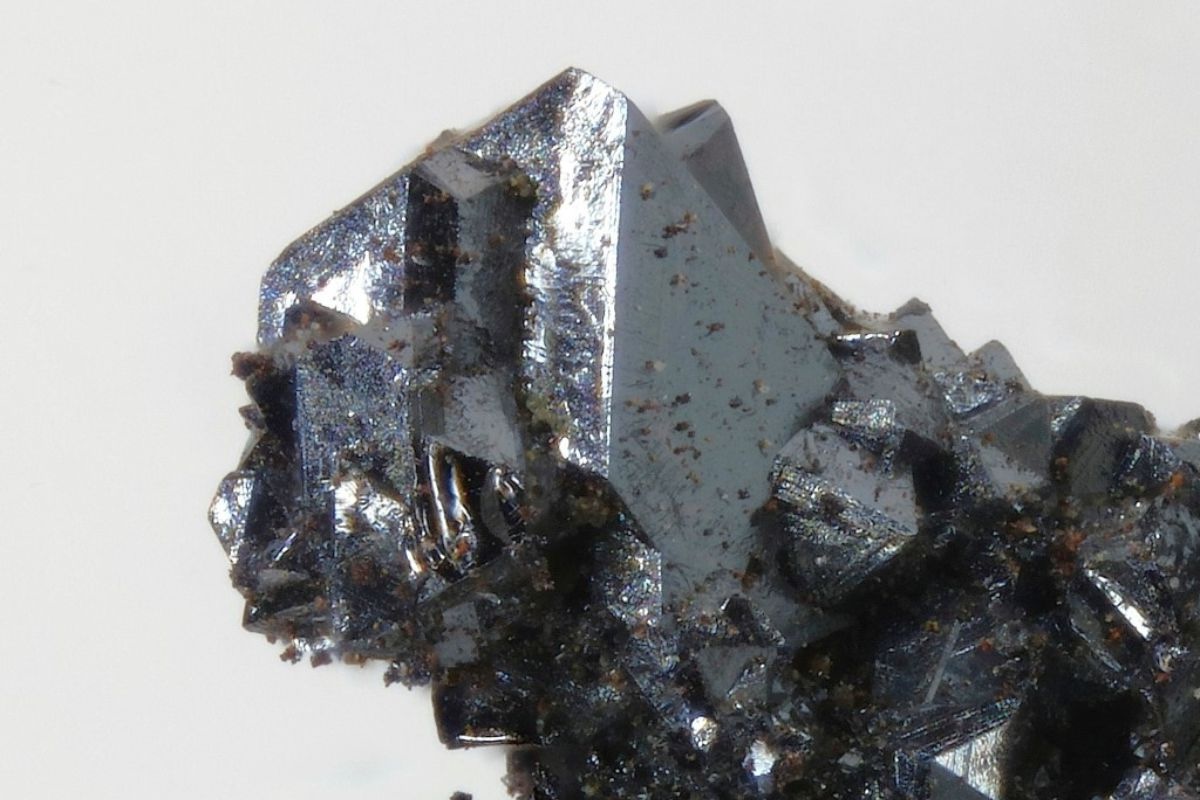
Cadmoindite might sound like a tongue-twister, but this rare mineral has a fascinating story. Found in only a few places on Earth, it’s a compound of cadmium and sulfur. Cadmoindite crystals are usually tiny, often less than a millimeter across, making them a challenge to study. Despite their size, these crystals pack a punch in the world of mineralogy. They form in hydrothermal veins, often alongside other rare minerals. Scientists value Cadmoindite for its unique properties and its role in understanding geological processes. Ready to learn more? Here are 30 intriguing facts about this tiny but mighty mineral!
Key Takeaways:
- Cadmoindite is a rare, shiny mineral with a hexagonal crystal shape. It's used in pigments and prized by collectors for its fluorescent glow under UV light.
- Finding and studying cadmoindite is challenging due to its rarity and delicate nature. Its unique properties continue to intrigue scientists and collectors alike.
What is Cadmoindite?
Cadmoindite is a rare mineral that has intrigued scientists and collectors alike. Its unique properties and formation make it a subject of fascination. Let's dive into some interesting facts about this mineral.
- Cadmoindite is a cadmium sulfide mineral, primarily composed of cadmium and sulfur.
- It was first discovered in 1977 in the Tsumeb Mine, Namibia.
- The mineral is named after its chemical composition, cadmium (Cd) and sulfur (S).
- Cadmoindite typically forms in hydrothermal veins, where hot, mineral-rich water flows through cracks in rocks.
- It is often found in association with other sulfide minerals like sphalerite and galena.
- The mineral has a hexagonal crystal system, meaning its crystals form in a hexagon-like shape.
- Cadmoindite is usually yellow to orange in color, but can sometimes appear red.
- It has a Mohs hardness of 2.5, making it relatively soft and easy to scratch.
- The mineral has a resinous to greasy luster, giving it a shiny, almost oily appearance.
- Cadmoindite is considered a secondary mineral, meaning it forms from the alteration of primary minerals.
Where Can You Find Cadmoindite?
Finding cadmoindite can be quite the adventure. Its rarity means it is not commonly found in many places around the world.
- Besides Namibia, cadmoindite has been found in the Harz Mountains of Germany.
- It has also been discovered in the Keno Hill District of Canada.
- Small amounts have been located in the United States, particularly in Colorado.
- The mineral is often found in old mining dumps, where it forms as a secondary mineral.
- Collectors often seek cadmoindite in areas known for rich sulfide mineral deposits.
Uses and Applications of Cadmoindite
While cadmoindite is not widely used in industrial applications, it has some niche uses and is highly valued by collectors.
- Due to its cadmium content, cadmoindite can be used in the production of cadmium-based pigments.
- The mineral is also studied for its unique crystal structure and formation processes.
- Collectors prize cadmoindite for its rarity and striking color.
- It is sometimes used in educational settings to teach about mineral formation and properties.
- Cadmoindite samples can be found in museums and private collections around the world.
Interesting Properties of Cadmoindite
The unique properties of cadmoindite make it a fascinating subject for study and collection.
- Cadmoindite is fluorescent under ultraviolet light, glowing a bright yellow.
- The mineral is soluble in acids, which can be used to test its authenticity.
- It has a specific gravity of 4.82, making it denser than many other minerals.
- Cadmoindite can form pseudomorphs, where it replaces another mineral while retaining the original mineral's shape.
- The mineral's crystals can sometimes form in intricate, needle-like patterns.
Challenges in Studying Cadmoindite
Studying cadmoindite comes with its own set of challenges due to its rarity and delicate nature.
- The softness of cadmoindite makes it difficult to handle without causing damage.
- Its rarity means that large, high-quality samples are hard to come by.
- The mineral's tendency to form in small, isolated pockets makes it challenging to locate in the field.
- Cadmoindite's solubility in acids requires careful handling during chemical analysis.
- Despite these challenges, ongoing research continues to uncover new insights into this fascinating mineral.
Final Thoughts on Cadmoindite
Cadmoindite, a rare mineral, holds a unique place in the world of geology. Its distinct properties and formation process make it a subject of fascination for scientists and enthusiasts alike. Found primarily in meteorites, cadmoindite provides valuable insights into the early solar system's history. Its rarity and unique composition make it a prized specimen for collectors. Understanding cadmoindite's characteristics helps researchers unlock secrets about the universe's formation. This mineral's significance extends beyond its scientific value; it also captivates those who appreciate the natural world's wonders. Whether you're a seasoned geologist or just curious about rare minerals, cadmoindite offers a glimpse into the complexities of our planet and beyond. Keep exploring, and who knows what other fascinating discoveries await in the world of minerals.
Frequently Asked Questions
Was this page helpful?
Our commitment to delivering trustworthy and engaging content is at the heart of what we do. Each fact on our site is contributed by real users like you, bringing a wealth of diverse insights and information. To ensure the highest standards of accuracy and reliability, our dedicated editors meticulously review each submission. This process guarantees that the facts we share are not only fascinating but also credible. Trust in our commitment to quality and authenticity as you explore and learn with us.
